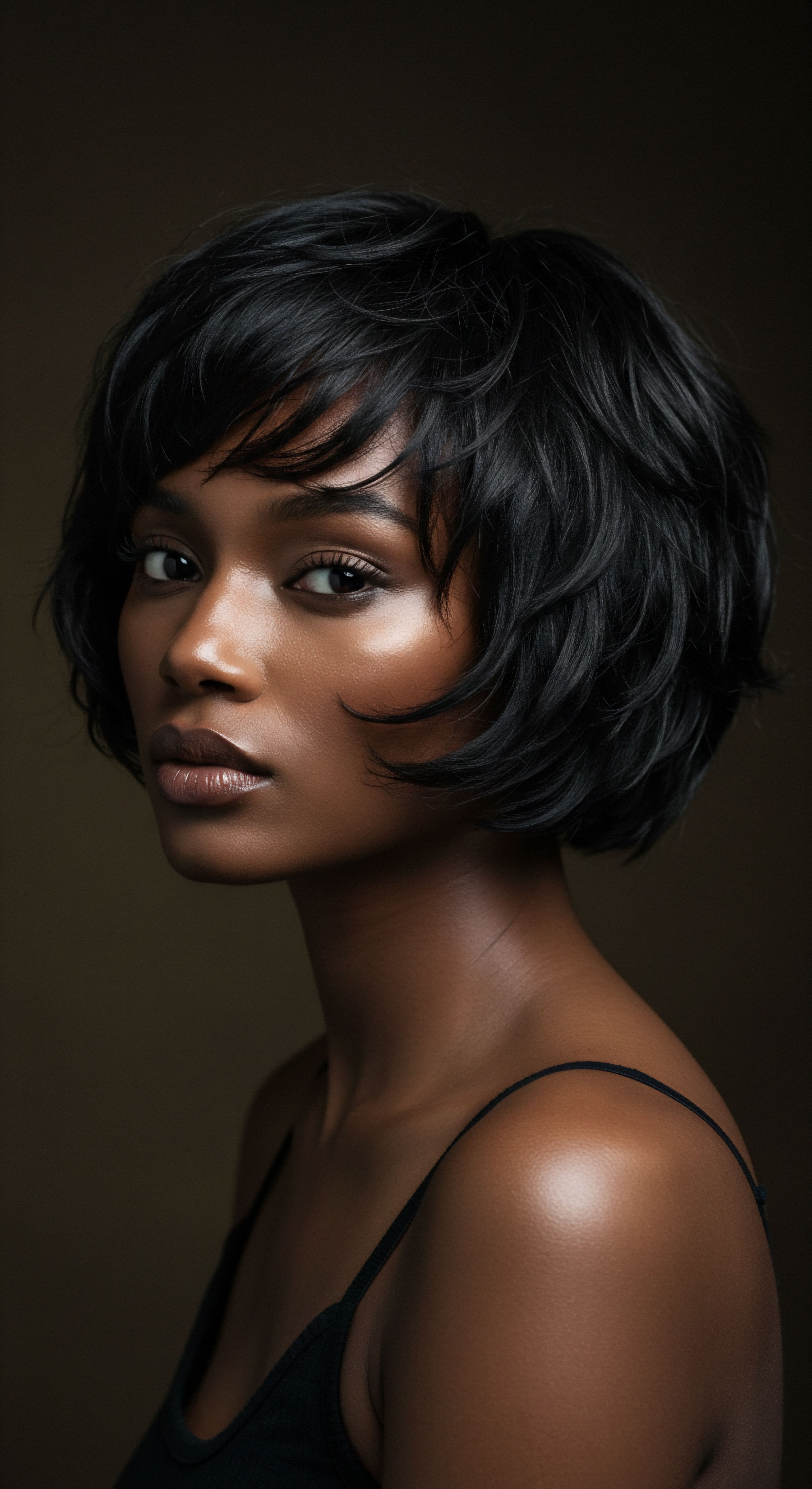
Roots
The whisper of history often finds its way into the very fibers of our being, and for textured hair, this whisper carries stories of profound significance. It speaks of heritage, resilience, and an enduring connection to identity. For generations, the coils, curls, and waves that naturally spring from our scalps have been subjected to scrutiny, judgment, and the rigid confines of societal expectations.
These expectations, often rooted in Eurocentric ideals of beauty and professionalism, created an unspoken burden, a quiet tension in the lives of many individuals with textured hair. The CROWN Act emerges from this long lineage of experience, a legislative acknowledgment that the way one’s hair grows from their head should never be a barrier to opportunity or belonging.
Understanding the CROWN Act truly begins with a journey into the historical landscape of hair discrimination. This discrimination is not merely a matter of aesthetic preference; it represents a systemic disadvantage that has denied educational and employment opportunities to individuals, particularly Black women and girls, for centuries. The perception of natural hair as “unprofessional” or “unkempt” has been a pervasive and damaging stereotype, leading to tangible consequences in schools and workplaces. This enduring bias compelled many to alter their natural hair, often through harsh chemical processes or time-consuming heat styling, simply to conform to prevailing norms.

Historical Roots of Hair Bias
The history of hair discrimination is deeply intertwined with broader narratives of racial oppression and the imposition of dominant cultural standards. From the era of slavery, where enslaved people were often forced to cover or alter their hair to erase cultural markers, to the post-emancipation period when straightened hair became a perceived prerequisite for social and economic mobility, the message was clear ❉ natural Black hair was deemed unacceptable in mainstream American society. This historical context provides a crucial backdrop for understanding the contemporary need for legal protections.
For centuries, the natural presentation of textured hair faced systemic disadvantage, pushing individuals to conform to narrow beauty standards.
Legal challenges to hair discrimination existed even before the CROWN Act, but often met with limited success under existing civil rights laws. Courts sometimes ruled that hair was a mutable trait, and thus discrimination based on hair was not necessarily racial discrimination under Title VII of the Civil Rights Act of 1964. This legal loophole allowed discriminatory practices to persist, leaving individuals vulnerable to adverse actions based solely on their hair.
For example, a 2016 case, EEOC v. Catastrophe Management Solutions, saw a Black woman’s job offer rescinded because she refused to cut her locs, a decision upheld by an appeals court, highlighting the inadequacy of existing protections at the time.

The Legal Framework of the CROWN Act
The CROWN Act, an acronym for “Creating a Respectful and Open World for Natural Hair,” directly addresses this historical and legal gap. It seeks to provide explicit legal protection against discrimination based on hair texture and protective hairstyles associated with race. These styles typically include, but are not limited to, afros, braids, locs, twists, and Bantu knots. The Act aims to clarify that such discrimination constitutes racial discrimination, thereby bringing it under the umbrella of existing civil rights protections.
The movement for the CROWN Act began in California in 2019, spearheaded by the CROWN Coalition, a group of organizations including Dove, the National Urban League, Color of Change, and the Western Center on Law & Poverty. California was the first state to sign the CROWN Act into law, amending its Fair Employment and Housing Act. Since then, momentum has steadily built, with many states following suit.
- Protected Hairstyles ❉ The CROWN Act typically protects styles like Afros, Braids, Locs, Twists, and Bantu Knots, recognizing them as integral expressions of racial and cultural identity.
- Legal Precedent ❉ The Act seeks to clarify that discrimination based on hair texture or protective hairstyles is a form of Racial Discrimination.
- Scope of Protection ❉ The CROWN Act generally prohibits discrimination in both Employment and Educational Settings.
While the federal CROWN Act has passed the U.S. House of Representatives, it has yet to pass the Senate, meaning its implementation remains at the state and local levels. As of September 2024, 27 states, along with Washington, D.C.
have passed CROWN laws. The legal landscape is still evolving, but the passage of these laws at various levels signifies a growing recognition of the deep-seated nature of hair discrimination and the necessity for explicit legal safeguards.
| Aspect of Discrimination Perception of "Unprofessionalism" |
| Historical Context Eurocentric beauty standards equated natural Black hair with unkemptness. |
| CROWN Act's Response Legally defines protective styles as professional and protected. |
| Aspect of Discrimination Exclusion from Opportunities |
| Historical Context Individuals denied jobs or school enrollment due to hair. |
| CROWN Act's Response Prohibits denial of employment and educational opportunities. |
| Aspect of Discrimination Psychological Burden |
| Historical Context Pressure to chemically alter hair for acceptance, leading to distress. |
| CROWN Act's Response Aims to reduce pressure, fostering self-acceptance and well-being. |
| Aspect of Discrimination Legal Loopholes |
| Historical Context Prior laws often failed to explicitly cover hair as a racial trait. |
| CROWN Act's Response Explicitly includes hair texture and styles under racial discrimination. |
| Aspect of Discrimination The CROWN Act addresses historical biases by providing clear legal protections for natural and protective hairstyles. |

Ritual
Stepping from the foundational understanding of hair’s deep roots, we turn now to the daily rituals, the quiet moments of care, and the profound shifts in self-perception that the CROWN Act has begun to usher in. Hair care is not merely a functional task; it is a ritual, a deeply personal interaction with one’s self and one’s heritage. For those with textured hair, this ritual has often been shadowed by an unspoken question ❉ “Will this style be acceptable?” The CROWN Act offers a gentle affirmation, a quiet permission to explore and celebrate one’s natural hair without fear of professional or advanced reprisal. It invites a re-imagining of daily routines, transforming acts of styling into expressions of authenticity rather than acts of conformity.
The impact of the CROWN Act on modern hair care rituals extends beyond legal compliance; it influences personal choices, mental well-being, and even the landscape of the beauty industry. Individuals now possess a legal shield, encouraging a more open relationship with their hair. This shift affects not only the physical care practices but also the emotional and psychological dimensions of hair styling.

Shifting Personal Styling Choices
For many years, the choice of hairstyle for Black individuals, especially women, was often dictated by external pressures. The desire to assimilate into corporate or advanced environments frequently led to the use of chemical relaxers or frequent heat styling, both of which can cause significant damage to hair over time. The CROWN Act creates an environment where individuals can confidently wear their natural curls, coils, and protective styles like locs and braids without the worry of being deemed unprofessional or facing disciplinary action.
The CROWN Act encourages a confident embrace of natural hair, lessening the pressure to conform to restrictive norms.
This newfound freedom translates into a broader spectrum of daily styling choices. Hair care routines may become less about altering texture and more about nourishing and enhancing natural beauty. Individuals might choose to wear wash-and-gos more often, experiment with various braid patterns, or allow their locs to grow without concern for length restrictions. This personal liberation affects how products are chosen, how time is spent on hair, and ultimately, how individuals view their own appearance.
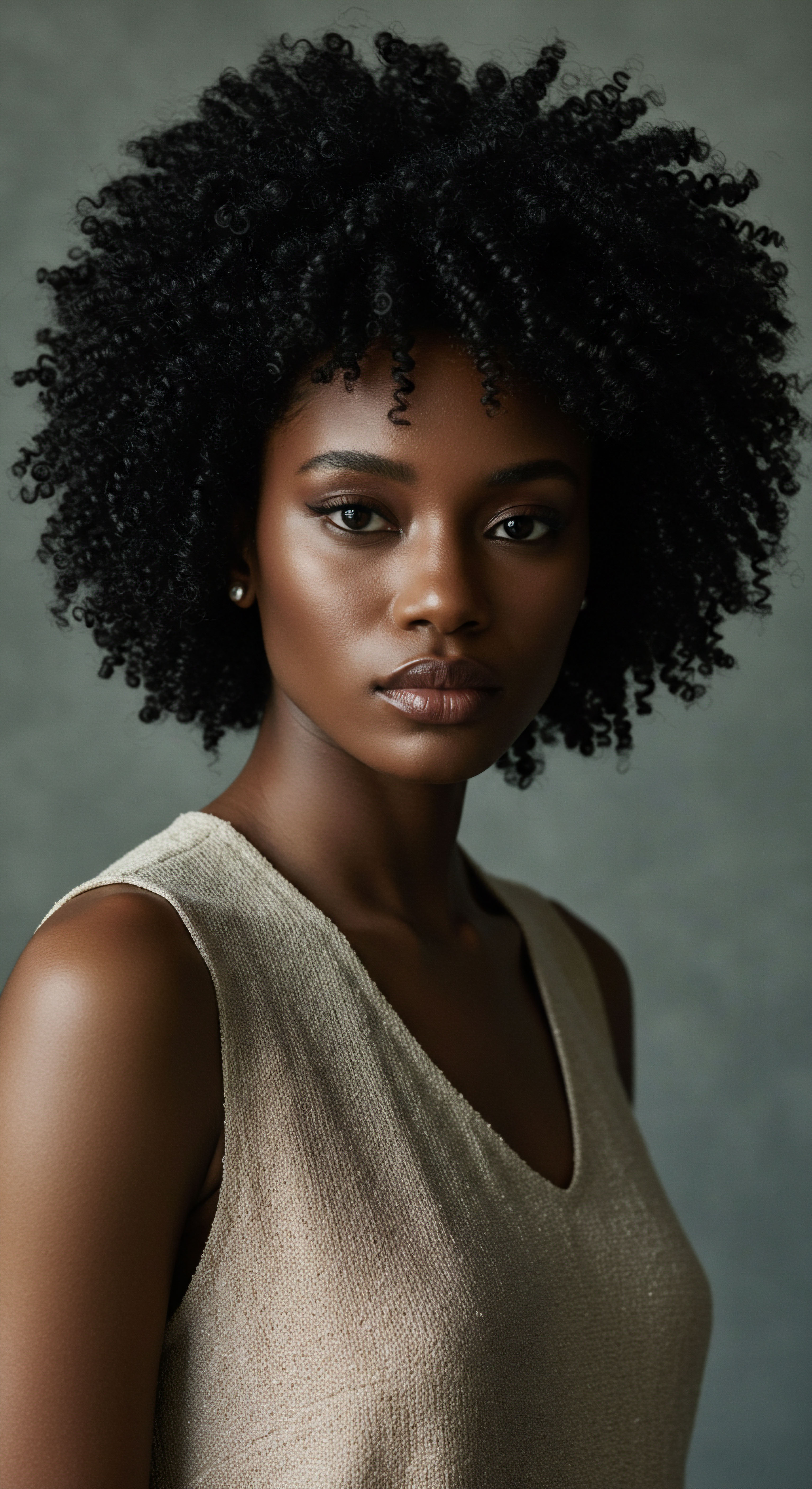
The Psychological Liberation of Authenticity
The psychological impact of the CROWN Act is profound. For too long, hair discrimination contributed to feelings of inadequacy, low self-esteem, and chronic stress for many Black individuals. The constant need to manage external perceptions of their hair created an emotional burden.
A 2025 study highlighted that Black adolescent girls were significantly more likely to experience hair-related discrimination and dissatisfaction, which in turn predicted more depressive symptoms compared to their white and Latina peers. The CROWN Act aims to alleviate some of this burden, allowing individuals to experience greater self-acceptance and a stronger sense of identity.
When individuals feel secure in their right to wear their hair naturally, it can foster a deeper connection to their cultural heritage. Hair has long been a symbol of identity, resilience, and community within Black cultures. The ability to express this identity freely, without fear of judgment or penalty, can contribute to improved mental well-being and a more positive self-image. It can reduce the “emotional tax” associated with navigating predominantly white spaces while maintaining natural hair.
Consider the subtle, yet pervasive, pressure that exists even today. A 2023 research study co-commissioned by Dove and LinkedIn revealed that Black Women’s Hair is 2.5 Times More Likely to Be Perceived as Unprofessional than white women’s hair. This same study found that approximately two-thirds (66%) of Black women change their hair for a job interview, with 41% specifically changing their hair from curly to straight.
This stark data point underscores the ongoing, tangible impact of deeply ingrained biases, even as legislative efforts gain ground. The CROWN Act provides a legal counterweight to these persistent perceptions, though the cultural shift requires sustained effort.
- Reduced Stress ❉ Individuals experience less anxiety about conforming to Eurocentric beauty standards.
- Enhanced Self-Esteem ❉ Freedom to wear natural hair contributes to a stronger, more positive self-image.
- Cultural Connection ❉ The ability to express identity through hair deepens ties to heritage and community.
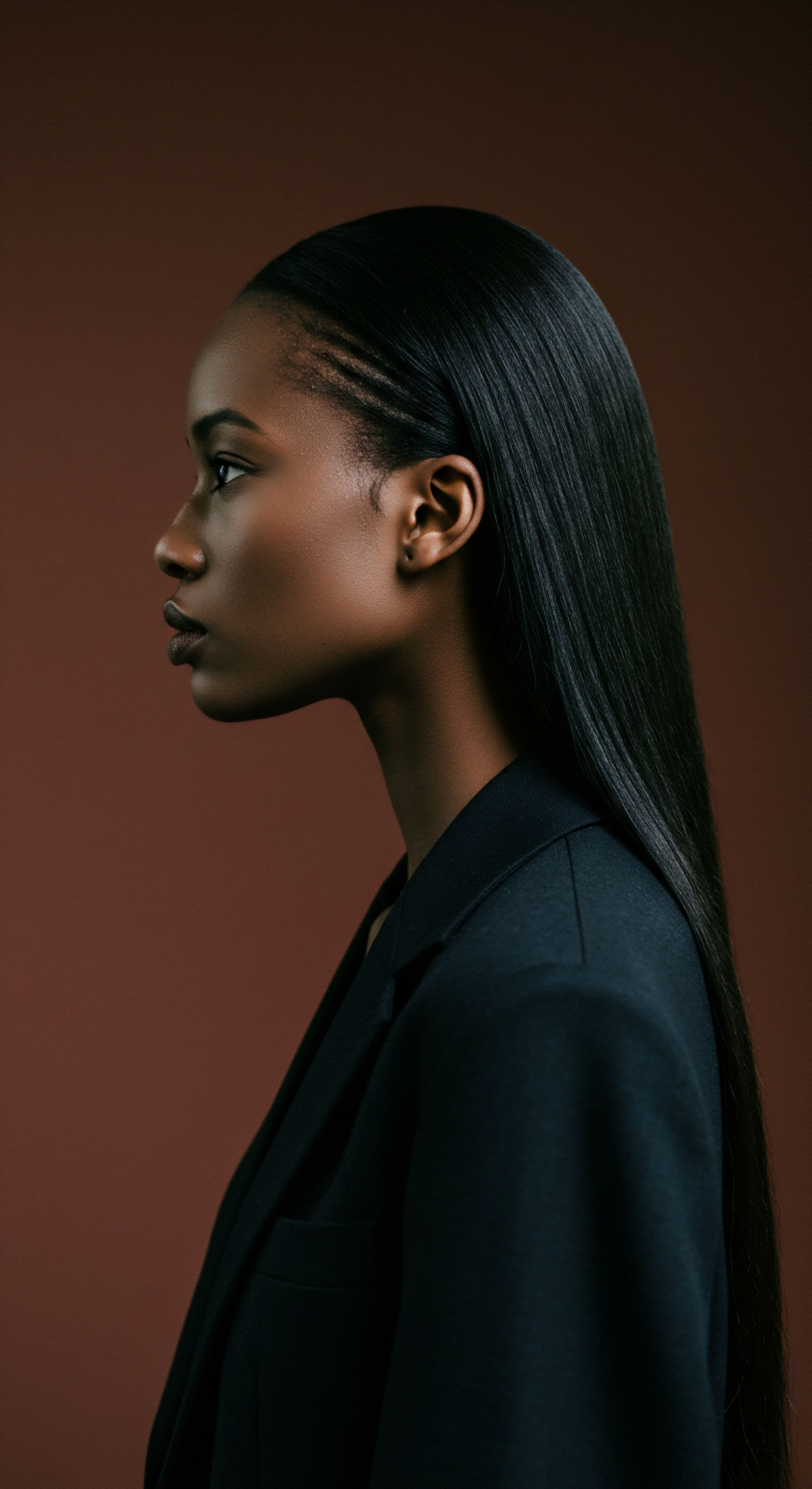
Industry Response and Product Innovation
The CROWN Act also plays a role in shaping the hair care industry. As legal protections expand, so does the market for products catering to natural and protective styles. Manufacturers are increasingly developing specialized products for various curl patterns, porosity levels, and styling needs specific to textured hair. This includes a wider array of cleansers, conditioners, stylers, and tools designed to nourish and define natural hair without requiring heat or chemical alteration.
Salons and stylists are also adapting. There is a growing demand for professionals skilled in cutting, styling, and caring for natural hair. This shift not only creates new business opportunities but also helps to de-stigmatize natural hair care, moving it from a niche market to a prominent segment of the broader beauty industry. The Act indirectly encourages this economic and professional realignment, reflecting a society slowly but surely acknowledging and valuing diverse hair presentations.
| Area of Impact Styling Freedom |
| Pre-CROWN Act Landscape Pressure to straighten or alter hair for conformity. |
| Post-CROWN Act Influence Encourages wearing natural textures and protective styles openly. |
| Area of Impact Product Demand |
| Pre-CROWN Act Landscape Dominance of straightening and chemical treatment products. |
| Post-CROWN Act Influence Increased market for natural hair care products and tools. |
| Area of Impact Salon Services |
| Pre-CROWN Act Landscape Limited expertise or focus on natural hair in many salons. |
| Post-CROWN Act Influence Growing demand for specialized natural hair stylists and services. |
| Area of Impact Personal Identity |
| Pre-CROWN Act Landscape Hair as a source of anxiety or forced assimilation. |
| Post-CROWN Act Influence Hair as a source of pride, authenticity, and cultural connection. |
| Area of Impact The CROWN Act fosters an environment where hair care rituals become acts of self-celebration, rather than compliance. |
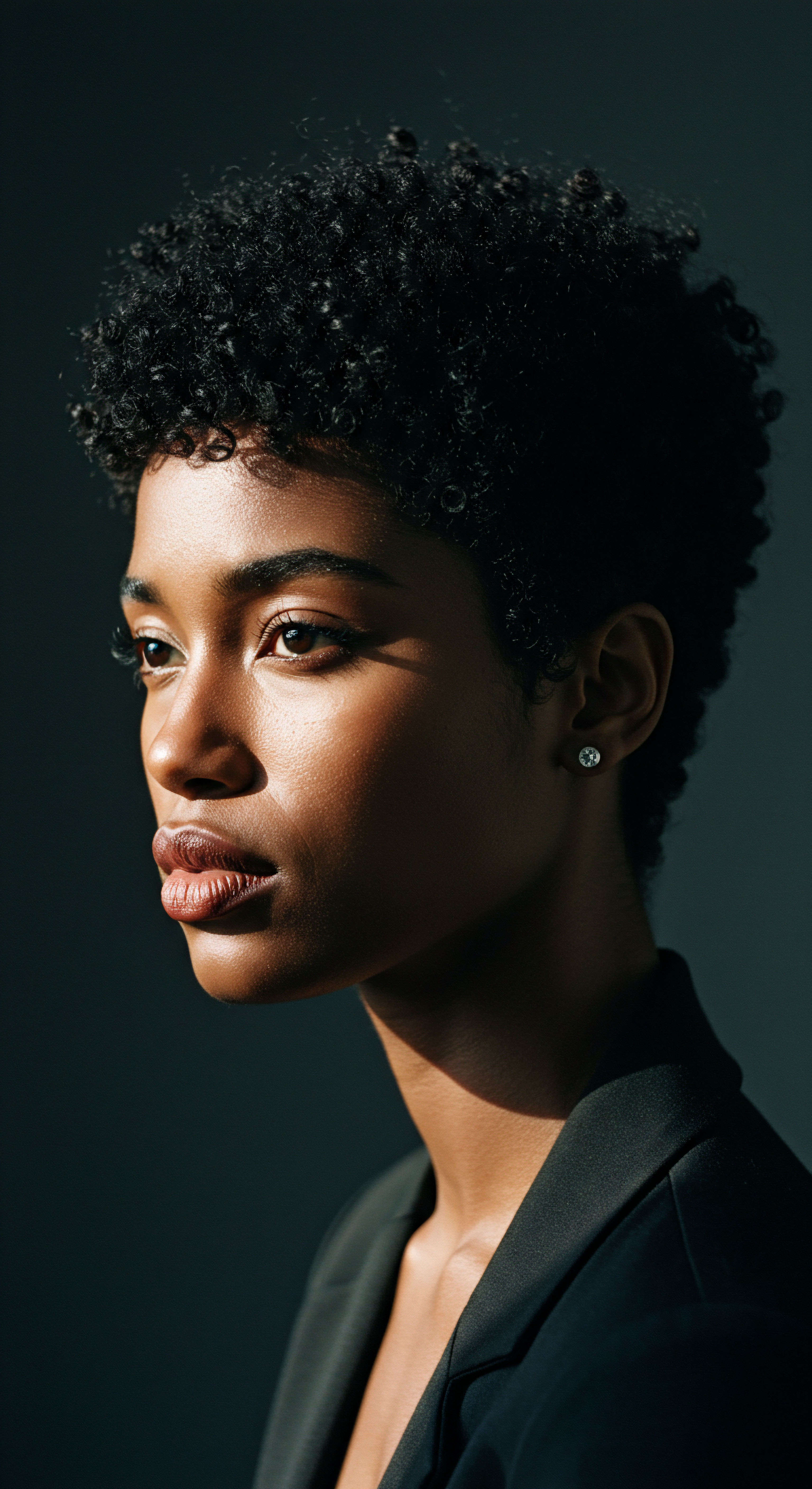
Relay
Moving beyond the personal realm of daily ritual, the CROWN Act sends ripples through the wider currents of society, touching upon the very structures that define our interactions and opportunities. This legislation is not an isolated legal decree; it is a catalyst within a larger cultural conversation, a profound statement that challenges entrenched norms and compels institutions to reflect upon their implicit biases. Here, we delve into the deeper, interconnected dimensions of the CROWN Act’s influence, examining its societal reverberations, its role in cultural literacy, and the ongoing dialogue it sparks about equity and belonging.
The CROWN Act’s presence, even if not yet universally enacted, serves as a powerful symbol. It prompts organizations to review their policies, educators to consider their curriculum, and individuals to confront their own perceptions of professionalism and beauty. This is a complex interplay of legal mandate, cultural awakening, and the persistent work of dismantling systemic barriers.

Reshaping Workplace and Educational Policies
One of the most direct and significant roles of the CROWN Act is its power to reshape formal policies within workplaces and educational institutions. Prior to its passage in various states, many employers and schools maintained dress codes and grooming policies that, while appearing neutral, disproportionately affected individuals with textured hair. These policies often prohibited styles like locs, braids, and afros, labeling them as “distracting” or “unprofessional.” The Act explicitly bans such discriminatory practices, providing a legal basis for individuals to challenge unfair treatment.
The CROWN Act prompts a re-evaluation of policies, encouraging a shift towards inclusive environments that value diverse hair expressions.
For instance, in Texas, while a version of the CROWN Act was passed, it initially contained loopholes allowing bans on hair longer than two inches, which explicitly targeted natural Black hairstyles on male students. This specific instance highlights the ongoing need for vigilance and comprehensive reforms to ensure the spirit of the Act is truly upheld, demonstrating that legal passage is often merely the first step in a longer process of implementation and interpretation. Such examples underscore the dynamic nature of legislative impact, where the fight for equity continues even after a bill becomes law.
The legislative action encourages organizations to move beyond mere compliance and towards a more inclusive culture. Many companies are now proactively reviewing their HR policies, conducting diversity and inclusion training, and fostering environments where natural hair is not only tolerated but celebrated. This shift can contribute to increased workplace satisfaction and retention, particularly among Black employees who previously faced the burden of conforming.
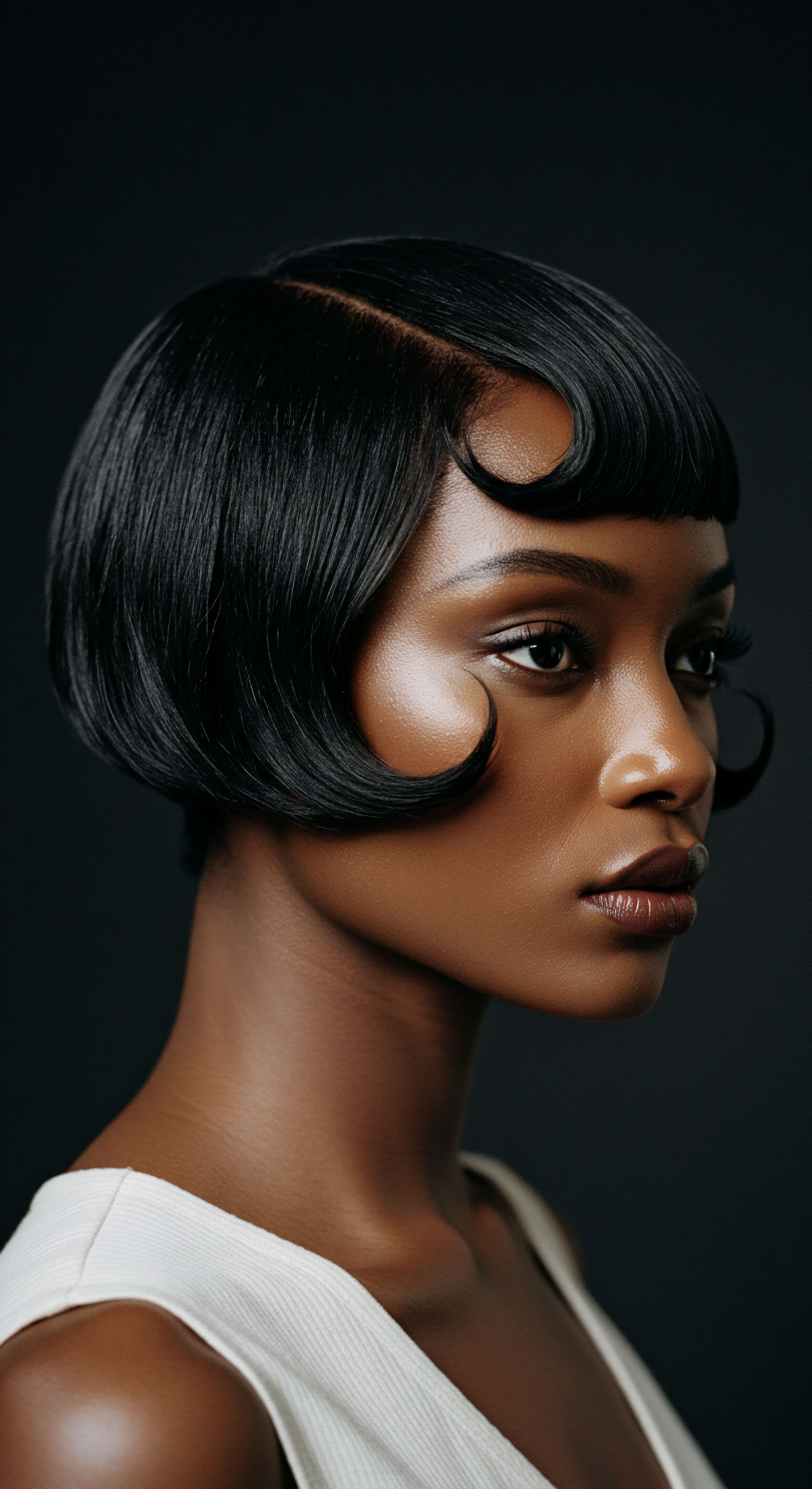
Educational Reform and Cultural Literacy
Beyond the workplace, the CROWN Act has a crucial role in schools, where hair discrimination can begin at a very young age. Studies indicate that Black children, as early as five years old, experience racial discrimination based on their hairstyles. Such experiences can have lasting psychological effects, impacting self-esteem and advanced engagement. The Act’s application in educational settings seeks to ensure that students can attend school without fear of being disciplined or excluded because of their hair.
This legal protection also serves as a catalyst for broader educational reform, promoting cultural literacy around hair. Schools may now find themselves prompted to incorporate discussions about diverse hair textures, their cultural significance, and the history of hair discrimination into their curriculum. This fosters an environment of understanding and respect among students and staff, cultivating a generation more attuned to the beauty and diversity of hair.
- School Environment ❉ The Act creates safer spaces for students, reducing disciplinary actions based on hair.
- Curriculum Integration ❉ It encourages educational institutions to teach about the cultural significance of diverse hair.
- Bias Reduction ❉ By challenging discriminatory norms, it helps reduce implicit biases in younger generations.
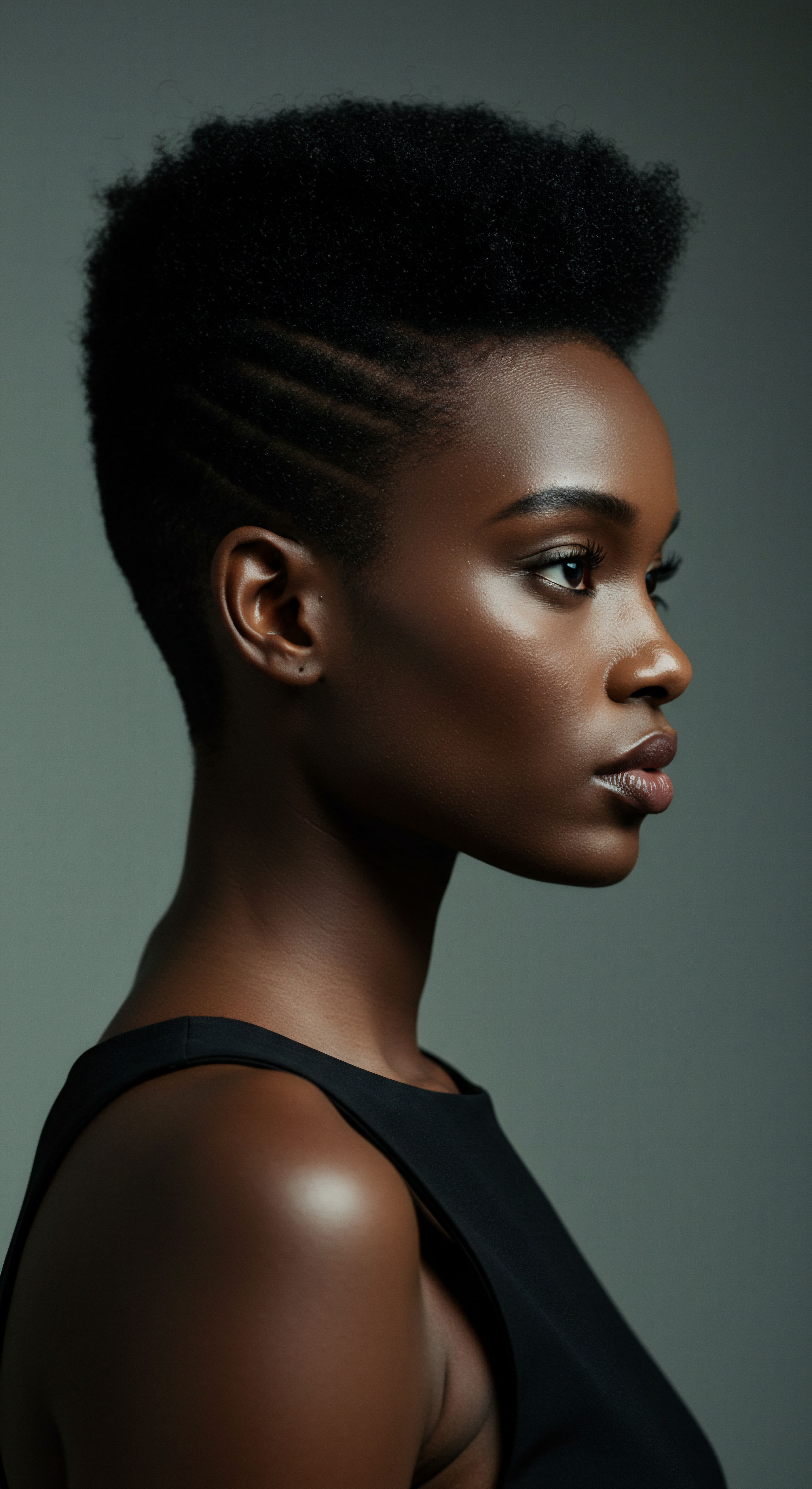
Economic Implications and Market Evolution
The CROWN Act also holds significant economic implications, particularly for the beauty and personal care industry. By validating natural and protective hairstyles, the Act indirectly stimulates demand for products and services that cater to textured hair. This includes everything from specialized shampoos and conditioners to styling tools and professional salon services.
In 2022, Black consumers spent $2.3 billion on hair care, making it their largest category of beauty and skin purchases. The CROWN Act reinforces this market, encouraging further innovation and investment in products that truly serve the needs of textured hair. This economic shift not only supports Black-owned businesses within the beauty sector but also pushes larger corporations to be more inclusive in their product development and marketing strategies. The increased visibility and acceptance of natural hair can lead to greater economic empowerment within communities that have historically been underserved by the mainstream beauty industry.
| Sector Affected Workplace |
| Previous Challenges Subjective grooming policies, limited career mobility for those with natural hair. |
| CROWN Act's Influence Mandates inclusive policies, reduces bias in hiring and promotion. |
| Sector Affected Education |
| Previous Challenges Disciplinary actions for students based on hair, negative self-perception. |
| CROWN Act's Influence Protects students, fosters cultural understanding in school settings. |
| Sector Affected Beauty Industry |
| Previous Challenges Underrepresentation of textured hair products, pressure for chemical alteration. |
| CROWN Act's Influence Spurs innovation in natural hair care, validates diverse beauty standards. |
| Sector Affected Cultural Identity |
| Previous Challenges Suppression of self-expression, internalized negative stereotypes. |
| CROWN Act's Influence Promotes authenticity, reinforces cultural pride and heritage. |
| Sector Affected The CROWN Act serves as a catalyst for broad societal shifts, from institutional policy to cultural perception and economic markets. |

Ongoing Challenges and the Path Forward
Despite its significant impact, the CROWN Act does not instantly erase centuries of bias. Challenges persist, as evidenced by ongoing instances of discrimination and the varying interpretations of the law across different jurisdictions. Some state-level versions of the Act may contain limitations, or enforcement might be inconsistent. The deeper, implicit biases held by individuals and institutions require sustained educational efforts and a continued commitment to cultural change.
The conversation around hair discrimination extends beyond legal statutes. It encompasses the psychological well-being of individuals, the economic empowerment of communities, and the broader societal understanding of beauty and professionalism. The CROWN Act provides a critical legal foundation, but the journey towards a truly respectful and open world for natural hair requires continuous dialogue, advocacy, and a collective commitment to dismantling all forms of prejudice. It calls upon us all to examine our own perceptions and to champion environments where every hair texture is celebrated for its inherent beauty and dignity.

Reflection
As we consider the path woven by the CROWN Act, a delicate yet powerful truth emerges ❉ the act of caring for one’s hair, and the freedom to present it authentically, is deeply personal and profoundly political. It speaks to more than just strands and styles; it speaks to the quiet dignity of selfhood, the vibrant echo of ancestry, and the boundless possibility of an inclusive future. The CROWN Act, in its essence, is a testament to the enduring human spirit that seeks to be seen, acknowledged, and respected in its purest form.
It reminds us that true progress is measured not only in grand legislative gestures but also in the gentle unfolding of individual liberation, one curl, one coil, one confident stride at a time. This ongoing movement calls upon us all to look beyond surface appearances, to recognize the rich stories held within every head of hair, and to champion a world where beauty knows no narrow bounds.

References
- Berkemeyer, C. (2020). Wear Your CROWN ❉ How Racial Hair Discrimination Impacts the Career Advancement of Black Women in Corporate America. Journal of Business Diversity, 23(2), 40-52.
- Byrd, A. & Tharps, L. (2001). Hair Story ❉ Untangling the Roots of Black Hair in America. St. Martin’s Press.
- Dabiri, E. (2019). Twisted ❉ The Tangled History of Black Hair Culture. Harper Perennial.
- Dove and LinkedIn. (2023). 2023 CROWN Workplace Research Study.
- Goodman, A. (2021). The CROWN Act ❉ A Jewel for Combating Racial Discrimination in the Workplace and Classroom. Economic Policy Institute.
- Legal Defense Fund. (n.d.). Hair Discrimination FAQ.
- Mbilishaka, A. & Apugo, D. (2020). The Natural Hair Bias in Job Recruitment. Michigan State University & Duke University.
- Opie, T. & Phillips, K. W. (2015). Natural Hair is Good Hair ❉ The CROWN Act and Ending Hair Discrimination in the Workplace. NCDA.
- Payne-Patterson, J. (2023). A Growing Number of States are Passing the CROWN Act to Ban Hair-Based Discrimination. Economic Policy Institute.
- Weitz, R. (2004). Rapunzel’s Daughters ❉ What Women’s Hair Tells Us about Women’s Lives. Farrar, Straus and Giroux.
- Woolford, S. J. et al. (2016). Hair and Exercise ❉ Barriers to Physical Activity in Black Adolescent Girls. Health Promotion Practice, 17(5), 735-742.